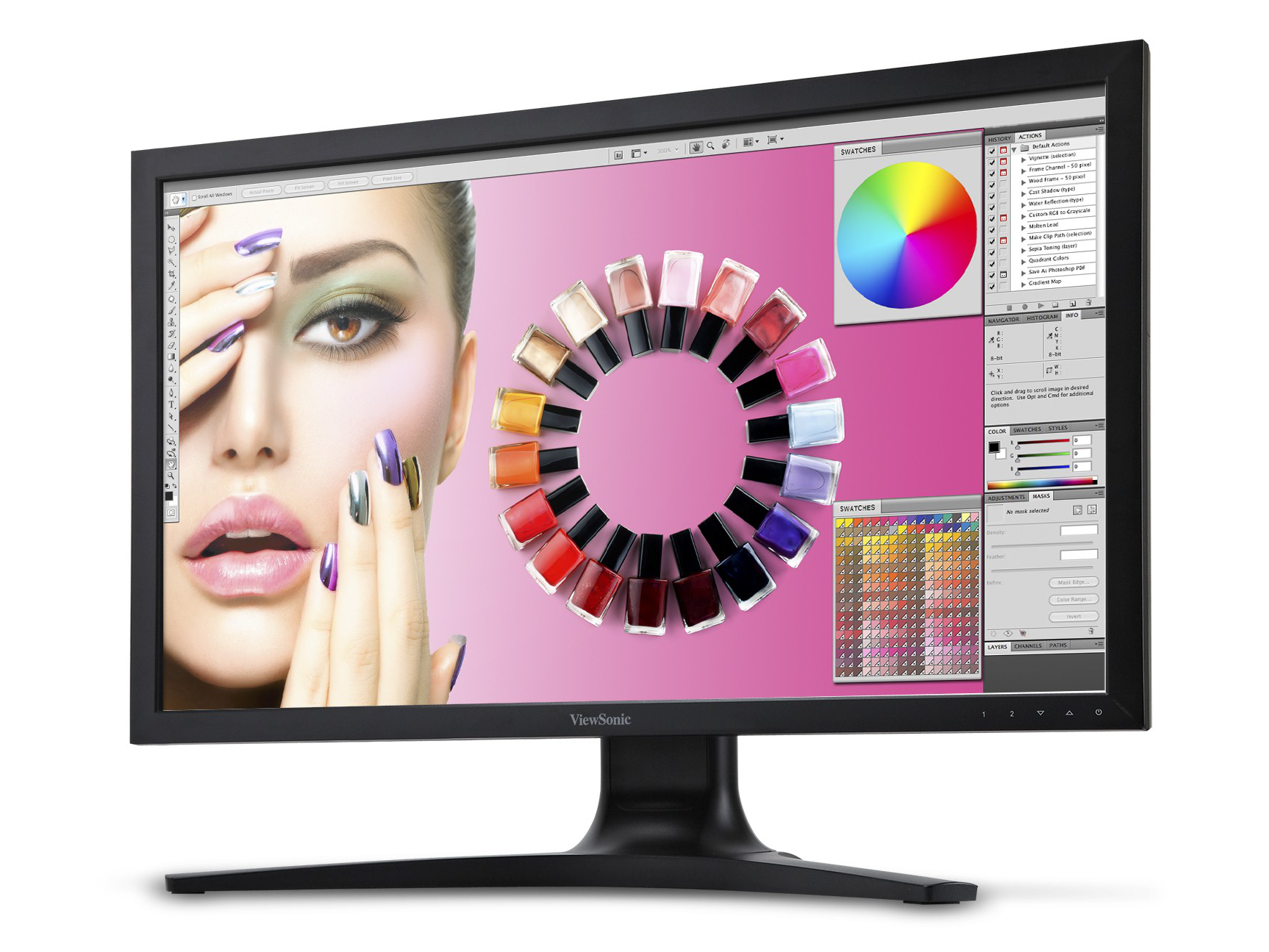ViewSonic Intros $1000 Adobe Color QHD Display
This monitor will set you back a solid grand, if not slightly more.

On Monday ViewSonic launched the VP2772, a 27-inch Adobe Color Quad HD display ideal for photography, graphic design, media creation, publishing and other color-critical applications. The company claims the new monitor accurately displays 99 percent of the wider Adobe RGB color space thanks to an advanced 12-bit color engine and a 14-bit LUT that processes up to 68.7 billion colors.
The new display sports a SuperClear IPS LED-lit panel calibrated with a Delta E≤3 value. Additional hardware specs include 178 degree viewing angles (horizontal and vertical), a typical response time of 12 ms, a dynamic contrast ratio of 20M:1, a typical contrast ratio of 1000:1 and a typical brightness of 350 cd/m2. The panel's resolution is an impressive 2560 x 1400 pixels.
"With Delta E≤3 color accuracy, images are accurately reproduced on your display – and on daisy-chained displays – with absolutely no differences in color," the company said. "During production, each of our displays is calibrated by technicians to achieve an average Delta E≤3 value. This way, every display shipped has the same phenomenal color performance."
ViewSonic's new panel also provides dual DisplayPort inputs and one DisplayPort output, allowing one image source to be shown simultaneously on multiple daisy-chained displays. Also thrown into the mix are HDMI v1.4 and DVI inputs, and a total of four USB 3.0 ports. All of these features are backed by an ergonomic design with tilt, pivot, swivel and height adjustments.
"Color performance is of the utmost importance to our professional series customers," said Kenneth Mau, Product Marketing Manager for ViewSonic. "The VP2772 delivers the ultimate in image quality with its Adobe Color capability and a 10-bit panel that delivers 1.07 billion colors. It is also equipped with all the premium features the pros need including flexible connectivity options, and daisy chain functionality."
ViewSonic said the VP2772 will be available in the Americas in mid-October for $999. However the company already has the monitor listed on its website for $1,086.99.
Follow us @tomshardware, on Facebook and on Google+.
Get Tom's Hardware's best news and in-depth reviews, straight to your inbox.
-
IndignantSkeptic OMG FFS instead of 8 bit per color component like a typical display, does this give us 10, 12, or 14 bit?! I can't fricken figure it out from this article. Make up your damn minds! Plus how can we take this display seriously when it is not OLED?Reply -
warmon6 Reply11590700 said:OMG FFS instead of 8 bit per color component like a typical display, does this give us 10, 12, or 14 bit?! I can't fricken figure it out from this article. Make up your damn minds!
It's not that hard to figure out what each number there using is when there telling you after that number...... No different than trying to read the specs of ram between timing, speed, voltages, ect.....
It's a 10-bit panel
It has 12-bit color engine
Last it has, 14-bit LUT (Look-Up Table)
Different area's of specs that tell what the monitor can do....
If you dont know what they are, it might be best if you use "nearly" everyone best friend, google.
Plus how can we take this display seriously when it is not OLED?
Maybe because some people dont care for OLED? I mean, there is still people holding on to there CRT monitors to this day.....
Seriously though, OLED is a feature some may like in a monitor but's not a requirement that should be in all monitor's.
And for a Display that is designed to be used to Editing Photo's and Video's (hence "Adobe display"), OLED might not be the best option due to some OLED displays having color balance issues....
Such as when (at least on consumer) OLED display ages that blue sub-pixel will wear out faster over time than it does an on LCD. So you'll notice blue colors fading in a few years. Either that or to allow the blue sub-pixel to age at the same rate as the red and green sub-pixel, some manufactures will make it much larger than the other 2 sub pixel, thus things could look a little more blue than it might be (if the display isn't setup correctly).
You cant have color inaccuracies at the Pro-level when your changing the look of video and photo.
Now would I get an OLED display if I had the chance? Sure thing. I myself dont do anything that requires my colors to be nearly 100% accurate and response times it far better for gaming than any LCD-LED monitor could give me.
Can I see reasons why it's not being included into monitors such as this? Yes as 1 of the reason is pointed above. -
kinggremlin I think you mean typical THG, Duckhunt. The monitor IS 1440p, but since THG is written by 12 year olds with a 2nd grade level understanding of editing, typos like this one are the expected norm in pretty much every news post.Reply -
Akizu What's the big deal? Just another overpriced display... Dell U2713H gives you 27" 2560 x 1440, 99% Adobe RGB with Delta E≤2 and 6ms response time... And its actually cheaper.Reply